Start 2022 with a polar bear swim, run or hike
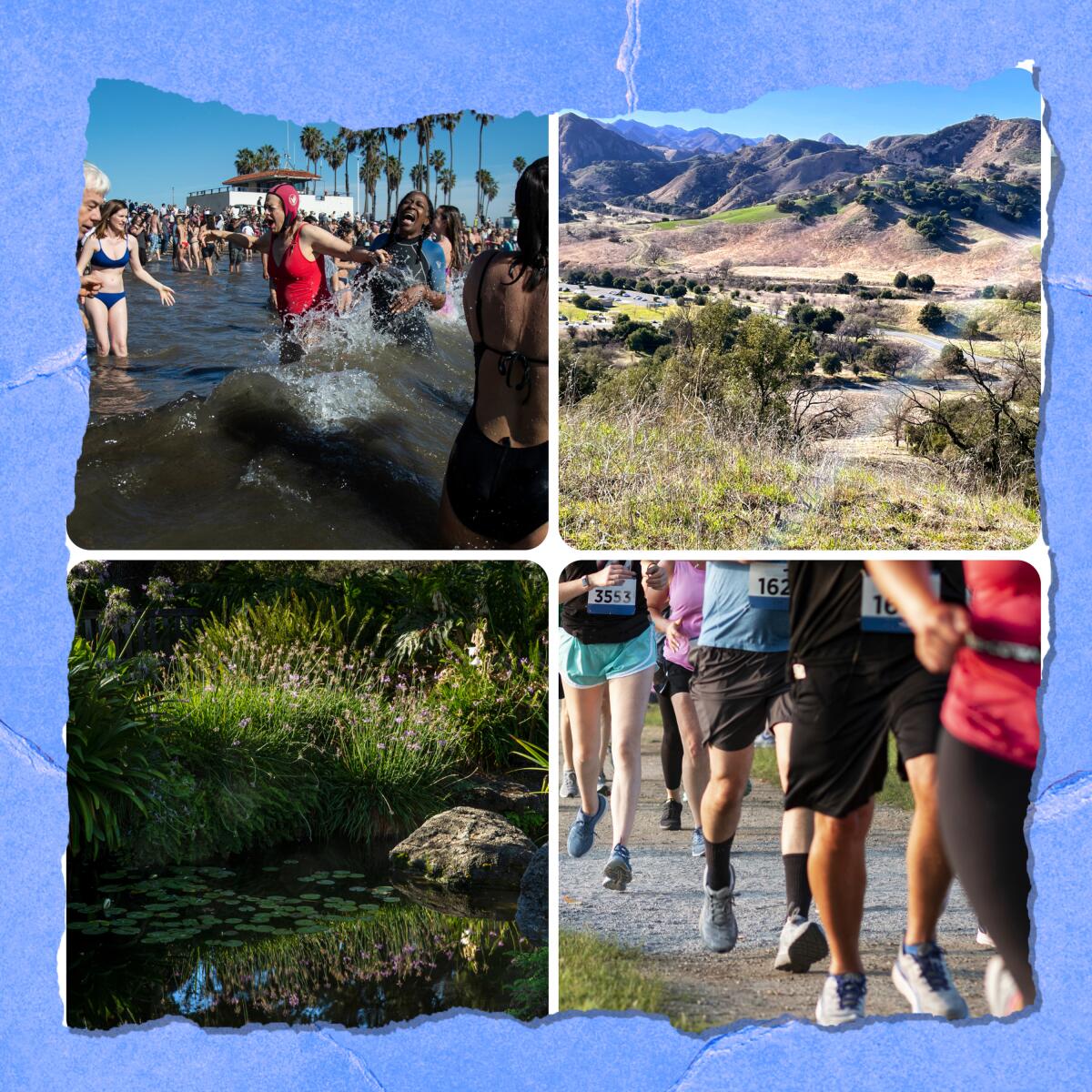
- Share via
It’s getting harder and harder to plan a 2022 New Year’s celebration. The surge of the Omicron variant causing a spike in local COVID-19 cases has upended many public events and private parties. Much-needed rain and snow before New Year’s Eve may hamper travel plans for those trying to get to their favorite mountain spot over the weekend. And each day, hundreds of flights around the country have been canceled. What to do? Rest up on New Year’s Eve (OK, stay up late enough to salute 2022) and plan an active Jan. 1.
Huntington Beach: Write a New Year’s resolution on the back of your running bib and take off on Run in the New Year on Jan. 1. Run, jog or walk (strollers welcome) on a flat 5K, 10K or half-marathon course along the bike path at Bolsa Chica State Beach. Rolling start times begin at 8 a.m.; entry fees start at $42. Check out details on the race’s website.
San Pedro: The Cabrillo Beach Polar Bears host their annual New Year’s Day dip and swim (barring any COVID rule changes) at noon Jan. 1. Show up at 11:30 a.m. to see Steve Herbert and Kathleen Seixas Greene crowned Polar Bear king and queen, then race into the water at Cabrillo Beach for your own first dip of 2022. Details and updates are on the Cabrillo Beach Polar Bears’ Facebook page.
Santa Monica Mountains: Looking for inspiration in 2022? This hike may help. Join a free, ranger-guided hike to Inspiration Point, a knoll that provides good views of Malibu Creek State Park and its dramatic rock foundations. This is a good event for newcomers who want to experience a short hike with a little elevation gain. The hike will be from 1:30 to 3:30 p.m. at King Gillette Ranch at 26876 Mulholland Hwy. in Calabasas. Register in advance here. Also, check out First Day Hikes offered at California State Parks on Jan. 1.
Arcadia: Maybe you want to be mindful about how you start 2022. The Los Angeles County Arboretum is open Jan. 1 and offering two-hour forest bathing sessions at 9 a.m. and 2 p.m. ($25 to $35 per person). A guide shows you how to slow down and observe nature with all the senses — a relaxation technique we all may need to master in these uncertain times. Good for all ages; more information is on the Arboretum’s website.
4 things to do this week
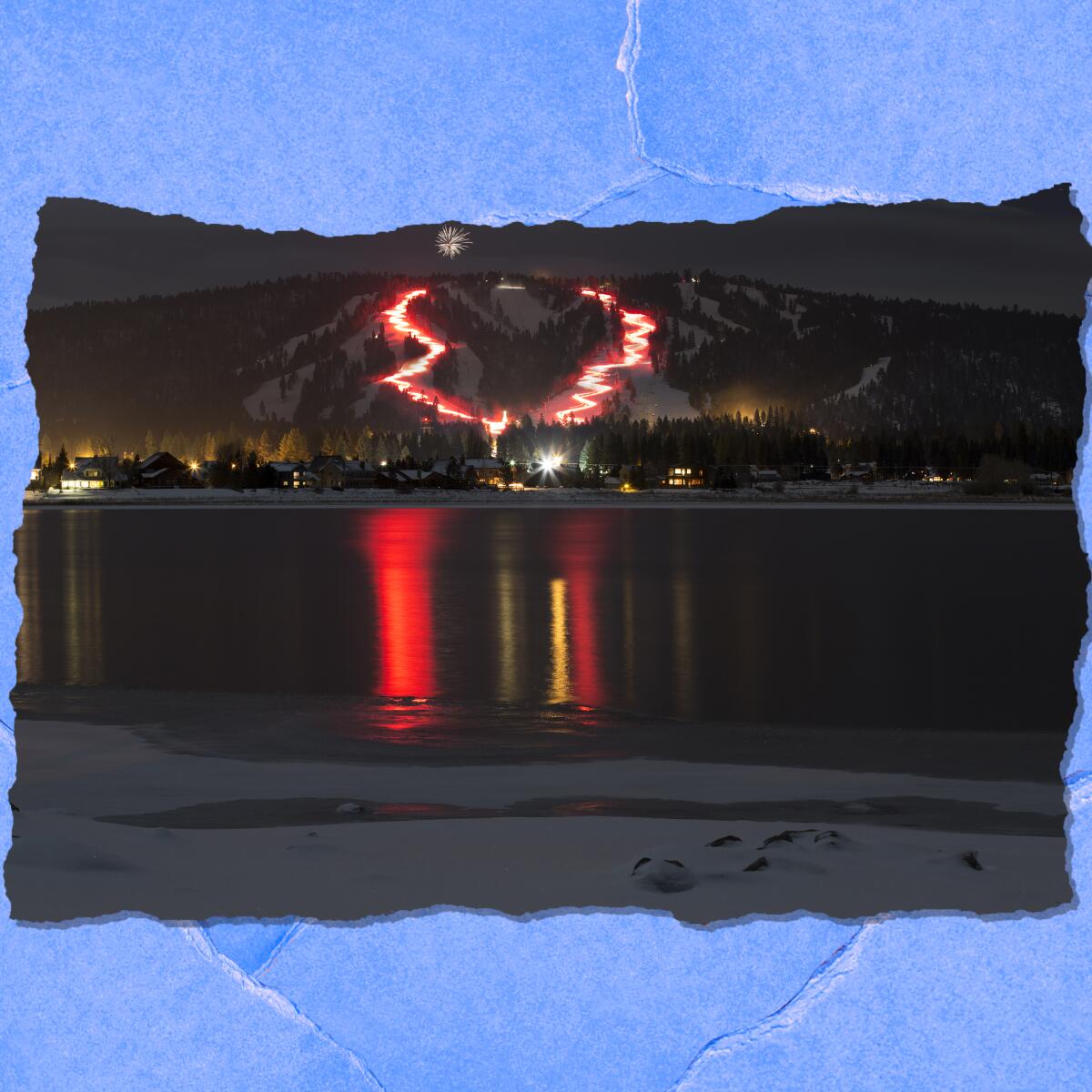
1. One bright spot for New Year’s Eve: the Torchlight Parade at Snow Summit. For more than half a century, skiers (and now snowboarders too) have lighted up the ski slopes on New Year’s Eve as they make their way down in the dark at Snow Summit in Big Bear Lake. Visitors should bundle up to watch for free and listen to a live DJ in the parade viewing area. The 57th Torchlight Parade kicks off at 7 p.m. and continues until 10 p.m. Get more information here.
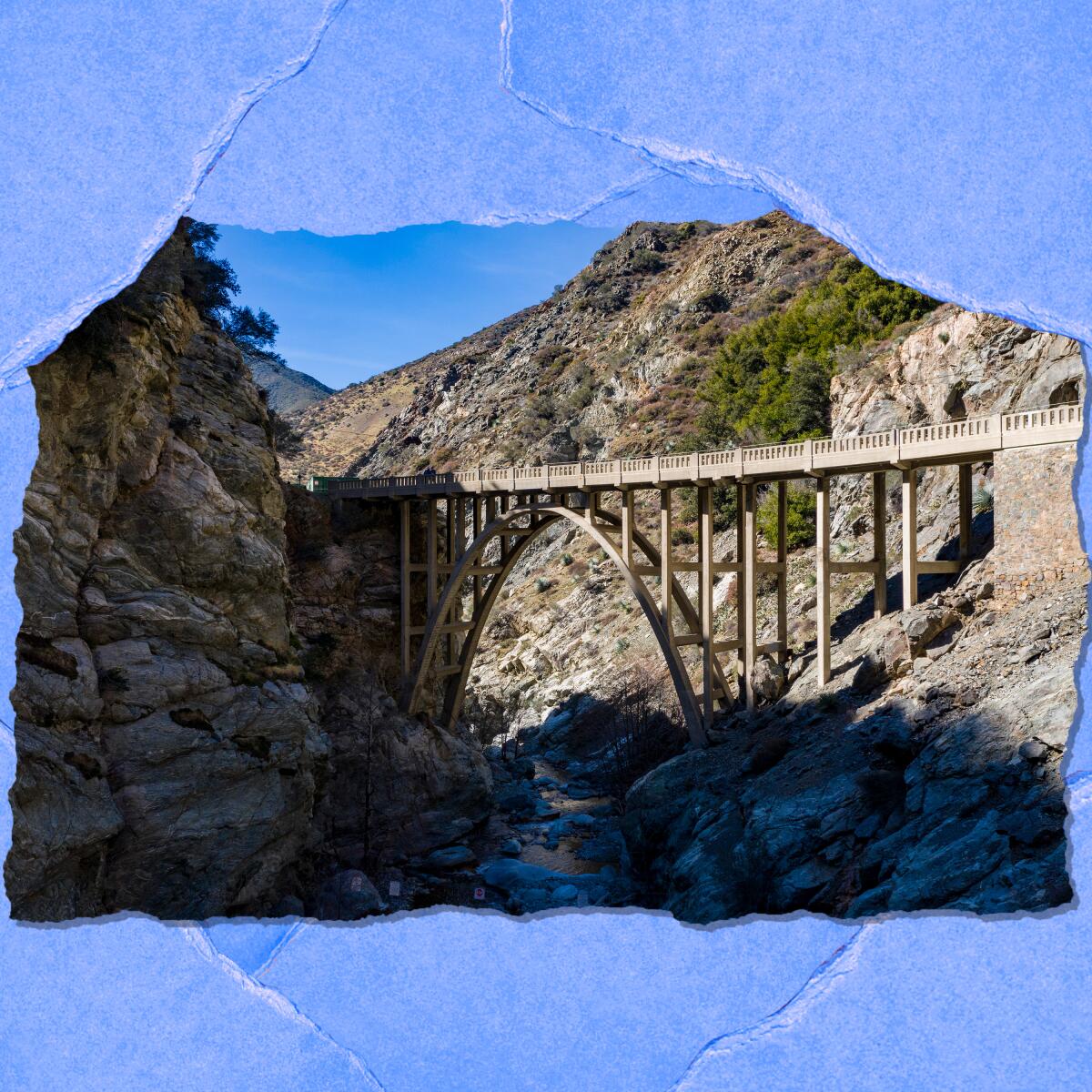
2. Want to take a hike? We’ve got you covered. One side effect of the ongoing coronavirus pandemic? Hiking trails have become more popular than ever — and The Wild was there to help point the way. In case you missed it, here’s a recap of all the hiking trails I loved sharing with you in 2021. Start with browsing the 50 best hikes in L.A., learn the best way to conquer the 67-mile Backbone Trail in the Santa Monica Mountains, and discover one of SoCal’s quirkiest routes, the Bridge to Nowhere — all stories that appeared in the 2021 L.A. hiking guide. Also, dig in to explore five little-known nature preserves not far from L.A. and the 12 best trails in Orange County, and learn how Inspiration Points in L.A. stack up (there are five of them). For those who want to go far, I hiked the 38.5-mile Trans-Catalina Trail so you’ll know what to expect. For those who like something to eat or an après-hike drink, check out these suggestions on where to find the right sandwich for 22 different hikes and where to find craft breweries that pair perfectly with 30 SoCal trails.

3. Learn how to properly recycle your Christmas tree. It’s the time of year when Christmas trees start popping up on sidewalks to be picked up and recycled, but it takes a little work to get it right. Let’s start with this: Flocked trees can’t be recycled, which means they go in your garbage can and add to the landfill. City of L.A. offers these options: Chop up your tree and put it into your green bin; schedule a Christmas tree pickup by calling (800) 773-2489; or request a bulky-items pickup online. Also, you may take your tree to a mulching center (there’s one in Lake View Terrace and another in San Pedro), to select city parks on Jan. 2 or select fire stations through mid-January. Here are the details and locations for L.A. residents; others should check recycling rules in their SoCal communities.

4. Guess what? We’ll all be composting food scraps from now on. The new year means new rules. Californians will be separating their green waste (think food scraps and waste) from other trash under a new law that goes into effect Jan. 1. Why? “To slow the advance of global warming, the state wants to redirect the material to composting centers or anaerobic digestion facilities, where it can help sink carbon back into the Earth or capture natural gas to — for instance — power trash trucks,” according to Times staff writer James Rainey. There are different ways cities and communities are responding to implement the new rule. Take a look at what you need to know about California’s new composting law.
Wild things

I don’t often think about the welfare of opossums, but maybe I should. They just seem to be trying to thrive after someone — namely, all of us — altered their habitat beyond recognition. The National Wildlife Federation sees them differently, as vital links in curbing Lyme disease (one can eat 5,000 ticks in a single season) and keeping snakes in check. “These remarkable and unfussy omnivores are protectors, not pests,” the organization says in an appeal to raise $1 million to protect the only marsupial native to America. And not only opossums need our help. The Save the Redwoods League is raising money to buy a chunk of Northern California’s famously remote Lost Coast and save it from logging. And the Theodore Payne Foundation seeks donations to continue educating Angelenos about the importance of restoring Southern California’s native habitat. Last year, it sold 138,000 native plants. “We’ve reached tens of thousands of people with a message of hope and resilience through meaningful relationships with the plants and animals we share our planet with,” the foundation’s appeal says. As 2021 comes to a close, think about what made you feel hopeful and resilient this year and how you can support your favorite preserve, park, garden, wildlife organization, cause or animal rescue organization. It’s still the season of giving, and year-end giving certainly counts.
Road trip
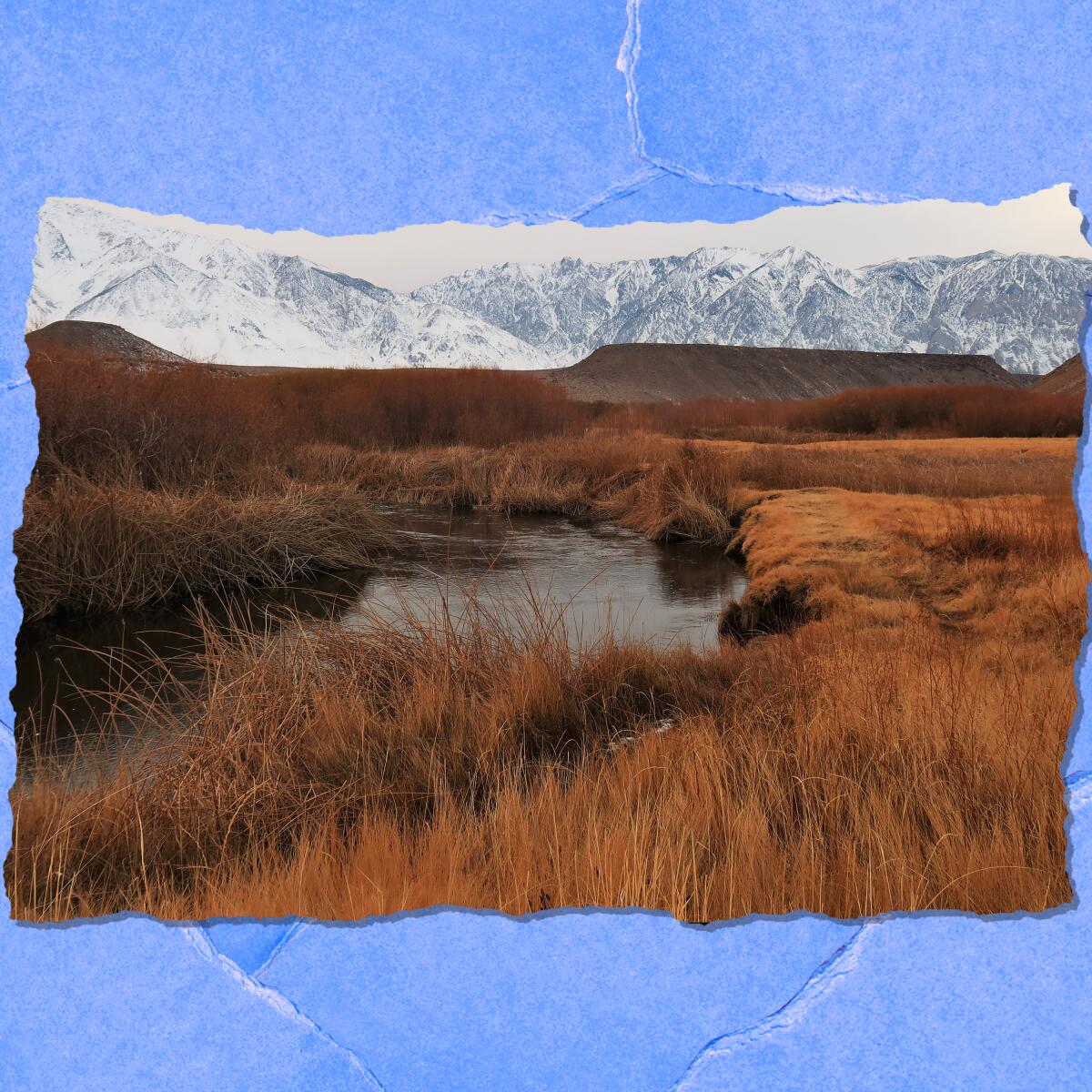
I know Darrell Kunitomi as the L.A. Times historian and tour guide. Others know him as an avid, enthusiastic and devout fly-fishing addict. He spent four days in the Eastern Sierra earlier in December, having made the journey because several creeks were open for catch-and-release fishing. Kunitomi decided to check out the scene — and the fish. Here’s his report:
Lower Owens River
“The river outside of Bishop is a year-round destination for anglers, but on this day, the fish didn’t cooperate. The blue-winged olive mayfly hatch didn’t come off. I did see a small pod of trout going for emerging bugs, but they ignored me and my flies quite rudely. Such is the game of fly-fishing: It isn’t always about catching trout. On this day, the views and the relaxation were more than enough. The air was fresh and sweet, and, wonder of wonders, there was no wind. When the sun came out, it almost got warm enough to shed my fleece.”
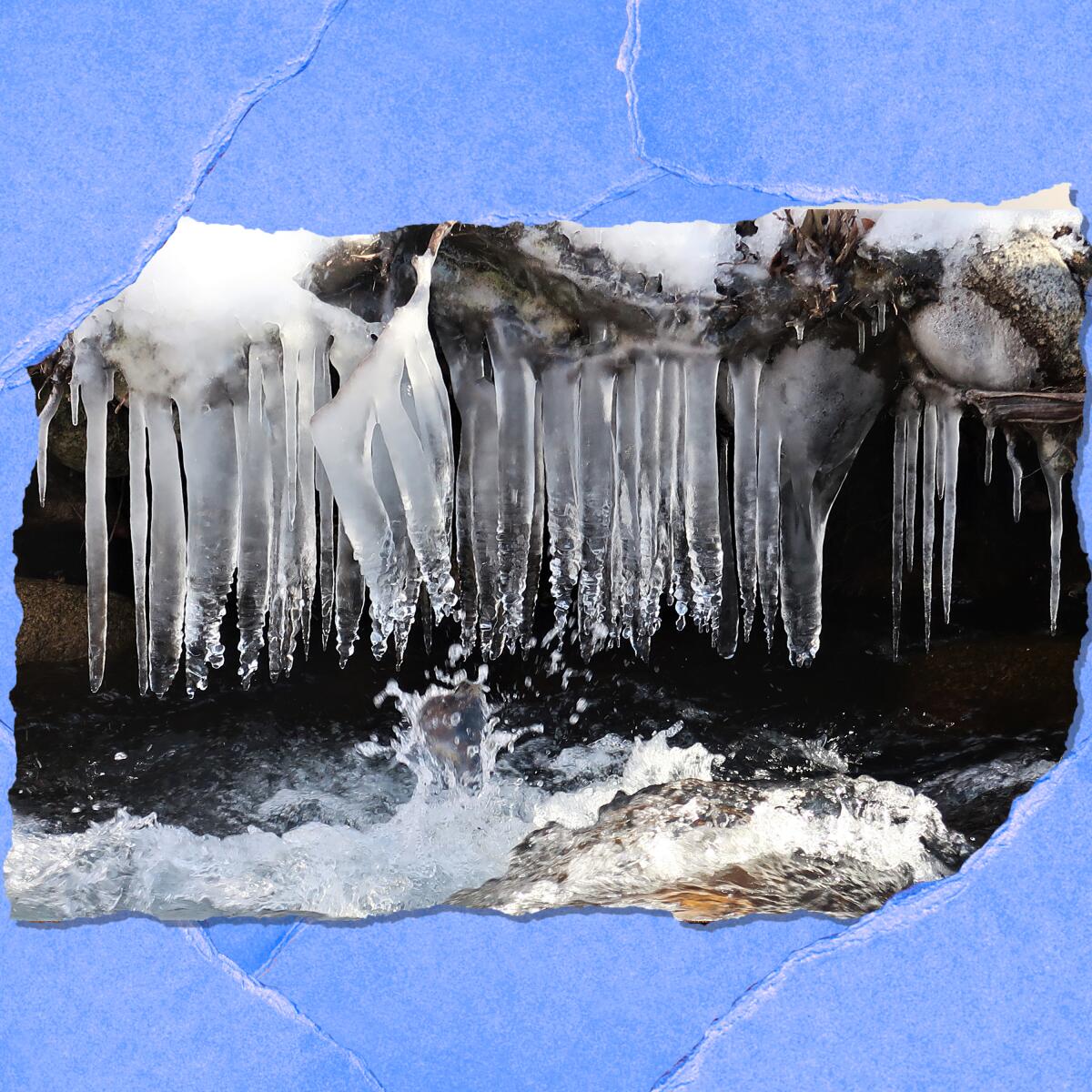
Big Pine Creek
“The drifts at Big Pine Creek were 2 feet at streamside, and access was difficult — if not dangerous. It was powdery, and you could easily drop into the water with each step in the snow. Logs and rocks were heavily encrusted with snow and ice too. I spotted fish, but fishing here wasn’t worth the danger. Even so, it was a wondrous scene: a heavy blanket of powder everywhere, clumps from trees falling on me as I cast my flies. And the light and the air were simply beautiful.
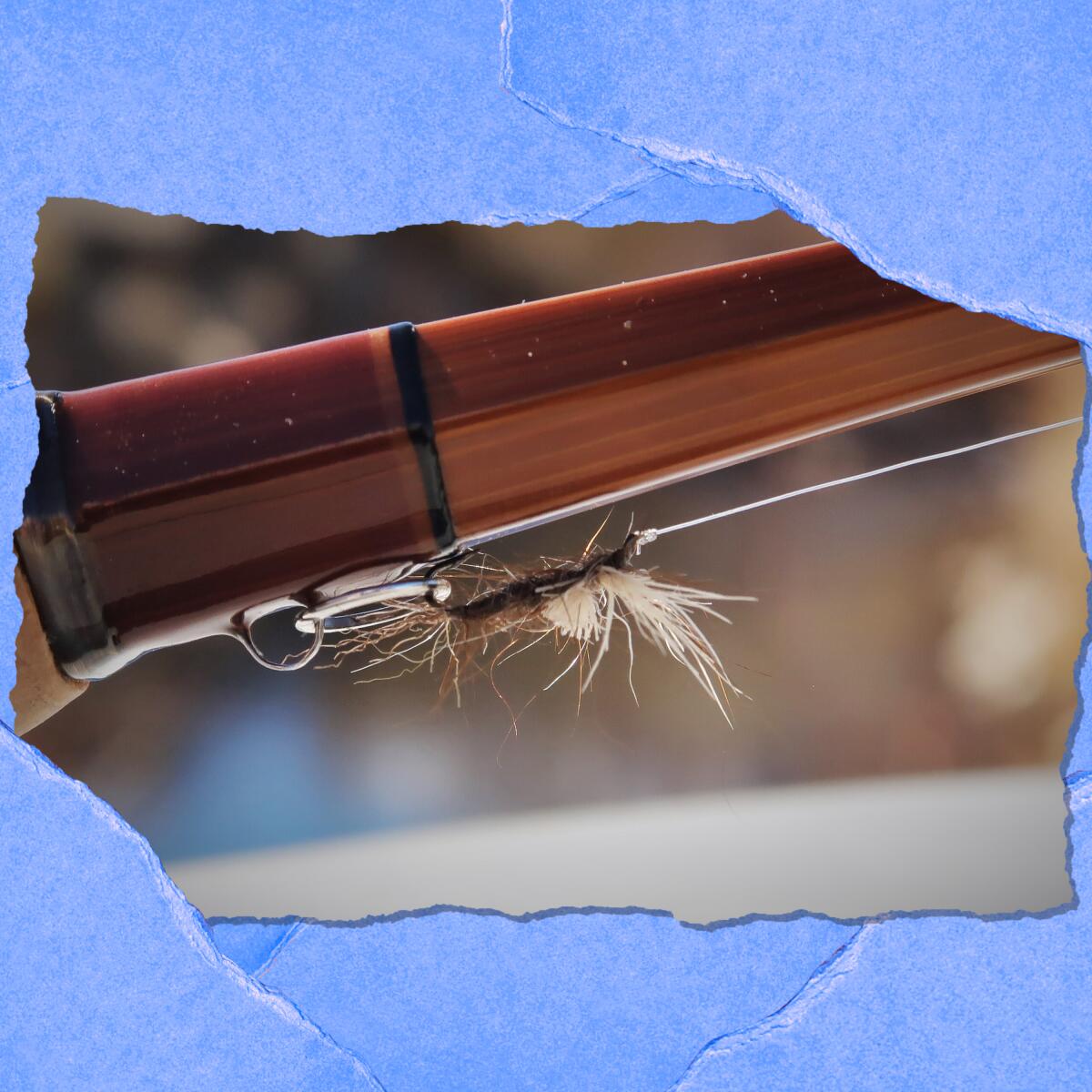
“This is about as simple a fly as can be tied. And it works just fine. This is a generic emerger. It imitates an insect that is shedding its nymphal shuck and becoming — or emerging — into adulthood. For the average trout, it’s feeding time. At this stage, bugs are totally vulnerable, literally caught between two worlds and trapped in the surface film, visible from below the water, outlined against the sky.
“The dubbing, or the body, is tied shaggy with trailing fibers. The white fibers are the hairs of the paw of a snowshoe rabbit. It’s tough hair, supposedly water-shedding (I don’t believe that), and is visible from yards away. The small rainbows loved this pattern. And it was a true thrill to take winter trout with dry flies.”
A secret spot
“Truth be told, it was too cold to wade. My healed fibula from a 3-inch spiral fracture long ago on the Upper Sacramento reminds me — that and the fact that I am old enough to remember the Beatles and when rush hour in L.A. was about one hour. I was more than happy to snap photos because the light was good, air was razor-sharp, and my hands were steady. What’s missed here is the sound, that rushing, crashing, sometimes roaring of a rocky Western creek that flows from high mountains. But this creek will remain unnamed.
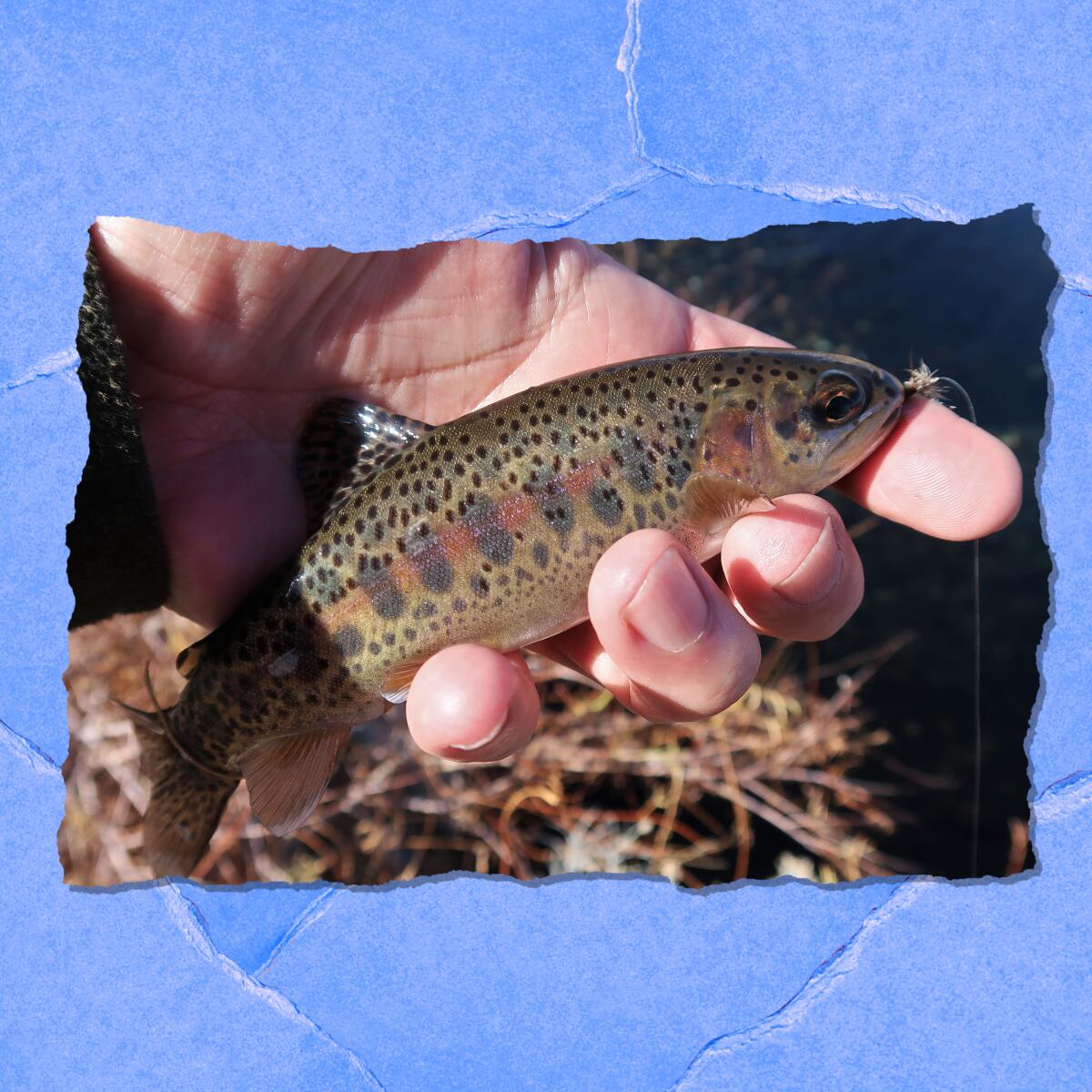
“It flows down to the Owens Valley like any of the dozens of others. Its streambed is lined with willows and brush and is nearly impossible to fish. The trout who live there are spooky and very protected in their homes. I was lucky to take the few fellows I did. The trout were small, and their bodies were as cold as ice in my hands. They relaxed as I took photos and removed the barbless flies, so calm almost as if to say, ‘Whew, glad to be out of that chilly water. Now lemme go.’ And I let them go.”
Packing up
“It was time to head home. I packed slowly and carefully. I had brought a lot of fly gear to pack up for the journey back to L.A. I have to take care. My gear can be pricey stuff — vintage, irreplaceable, never-to-be-made-again items — as the craftsmen and their companies are now long gone. Still, these items are a joy to use. It gives me a laugh that the old gear often outperforms today’s high-tech products. I happily settle for the natural fiber fly rod, split bamboo. Slower, yes, gently forgiving, wondrous on the flex. And if some claim they can ‘cast into a teacup,’ well, we bamboo guys cast into the handle.”
The must-read
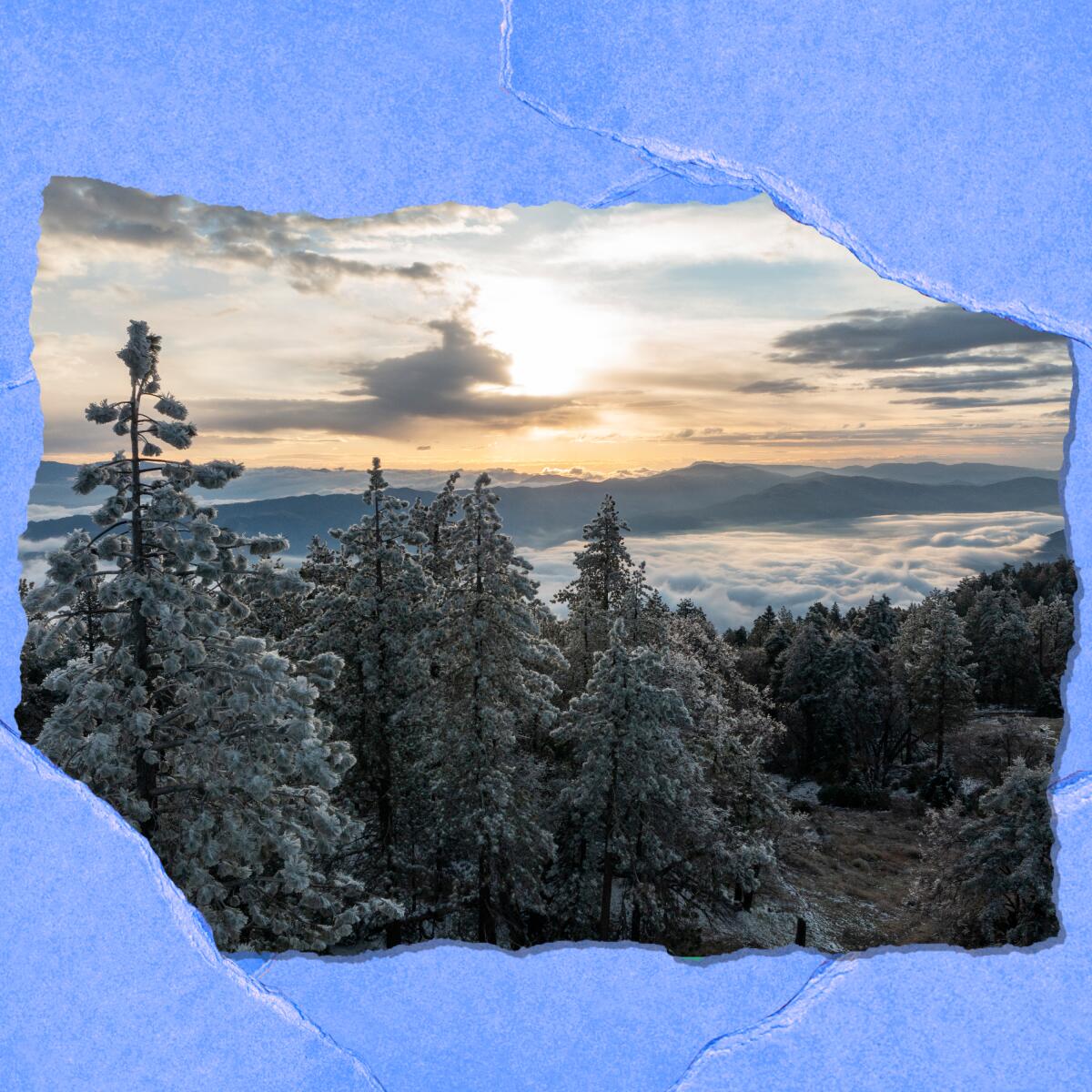
There’s a little-known nature preserve in the Tehachapi Mountains north of Los Angeles — and it just got bigger. It’s a place where condors roost and mountain lions, mule deer and bobcats roam. “The preserve is a Grand Central Station of wildlife corridors sustaining gene flows of native wildlife,” Cara Lacey, the Nature Conservancy’s director of wildlife corridors, told The Times, “by connecting them to swaths of undeveloped habitat that run from the Sierra Nevada to the Baja Peninsula.” The latest addition to the preserve is 6,805-foot-high Bear Mountain (not to be confused with the ski area in San Bernardino). Read more about why this eco-range matters to wildlife.
P.S.

Snow is falling near and far. Record snowfall in the Sierra Nevada brought 202.1 inches as of Tuesday, making it the snowiest December since 1970 (179 inches). Northstar California Resort in Truckee temporarily closed operations Monday after receiving more than 6 feet of snow in a 48-hour period. Here are photos of what the Sierra’s big snow days look like.
Send us your thoughts
Share anything that’s on your mind. The Wild is written for you and delivered to your inbox for free. Drop us a line at TheWild@latimes.com.
Click to view the web version of this newsletter and share it with others, and sign up to have it sent weekly to your inbox. I’m Mary Forgione, and I write The Wild. I’ve been exploring trails and open spaces in Southern California for four decades.

Sign up for The Wild
We’ll help you find the best places to hike, bike and run, as well as the perfect silent spots for meditation and yoga.
You may occasionally receive promotional content from the Los Angeles Times.




